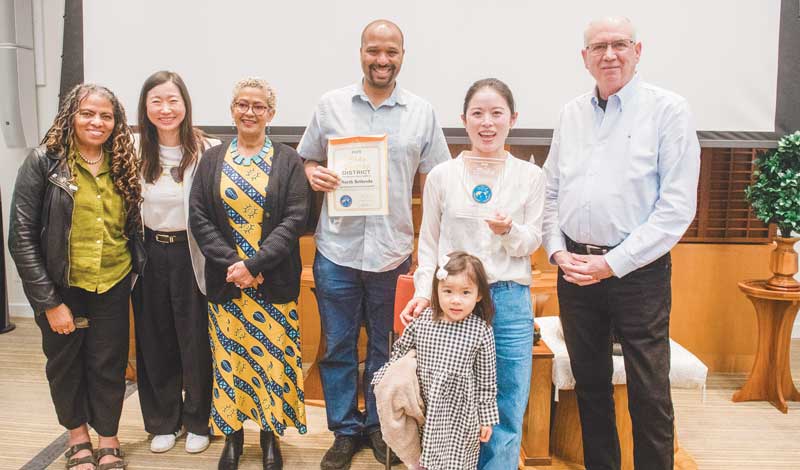This new study series will cover Soka Spirit topics to be presented by a youth or student division member at Soka 2030 meetings on the last Sunday of each month.
Throughout history, great movements for peace and equality have faced persecution and obstacles. Mahatma Gandhi’s nonviolent struggle for India’s independence and the U.S. Civil Rights movement, led by Martin Luther King Jr., endured relentless opposition.
Similarly, the SGI movement—led by Ikeda Sensei to spread the Nichiren Buddhist ideals of equality and respect for the dignity of life throughout the world—also faced serious struggles.
But what is the most serious threat to a movement for peace?
Buddhism teaches that it is not external enemies but internal ones. Nichiren Daishonin warns:
Neither non-Buddhists nor the enemies of Buddhism can destroy the correct teaching of the Thus Come One, but the Buddha’s disciples definitely can. As a sutra says, only worms born of the lion’s body feed on the lion. (“Letter from Sado,” The Writings of Nichiren Daishonin, vol. 1, p. 302)
The Tumult of the 1970s
In the 1970s, the Soka Gakkai experienced rapid growth due to the sincere efforts of its members. Yet, during this time, the Nichiren Shoshu priesthood intensified its attacks on the Soka Gakkai and its members, while feigning to work toward the same goal.
When a senior Soka Gakkai leader (who later renounced his faith) made careless remarks, the priesthood seized the chance to criticize the Soka Gakkai, demanding that Ikeda Sensei take responsibility.
It later came to light that Masatomo Yamazaki had been fueling the priesthood’s discontent. Yamazaki, a former member of the student division and trusted legal advisor to the Soka Gakkai, served as an intermediary between the organization and the priesthood.
Despite years of unwavering encouragement and support from Sensei, Yamazaki chose personal ambition over faith. He exploited his position to manipulate situations and colluded with the priests to further his own interests, seeking money and power.
His schemes ultimately led to Sensei’s resignation as president of the Soka Gakkai on April 24, 1979. This painful chapter in the Soka Gakkai’s history reflects Nichiren’s warning: Devilish forces within our movement are most destructive.
Winning With the Oneness of Mentor and Disciple
Ikeda Sensei details these events in The New Human Revolution, volume 30, portraying Yamazaki as the character Tomomasa Yamawaki. Sensei writes:
The aim of the traitorous Yamawaki and these self-serving priests was to isolate Shin’ichi [Yamamoto][1] completely and drive a wedge between him and the members. They believed that would allow them to manipulate the organization as they pleased and subjugate the membership to their authority. (pp. 88–89)
Even with all of Yamazaki’s complex plots to hinder our kosen-rufu movement, the Soka Gakkai steadily advanced.
What broke through his constant scheming? The spirit of the oneness of mentor and disciple. Sensei explains:
The lifeblood of the Soka Gakkai is the mentor-disciple spirit dedicated to kosen-rufu. Makiguchi, having died for his beliefs in prison, left an immortal example of selfless devotion to propagating the Law. And the second president, Josei Toda, attained a profound awakening while in prison, becoming deeply aware of his great mission as a Bodhisattva of the Earth. These events are the origin of the Soka Gakkai spirit. (The New Human Revolution, vol. 30, p. 89)
With this spirit, Sensei vowed “to keep fighting, whatever the situation might be” (NHR-30, 108). Just days after stepping down as president, on May 3, he composed the calligraphy for “shared struggle,” adding the inscription:
The evening of May 3, 1979—
I am determined,
my resolve unshakable,
to advance kosen-rufu
throughout my life,
trusting that I have true comrades.
—With palms pressed together. (NHR-30, 108)
Eventually, in the mid-1980s, Yamazaki was convicted of extortion and served time in prison. Despite all his attempts to destroy the Soka Gakkai, the movement continued to grow stronger, especially after it achieved spiritual independence from the Nichiren Shoshu priesthood in November 1991.
Obstacles will inevitably arise when we strive hard for kosen-rufu. However, we can perceive and overcome them by chanting Nam-myoho-renge-kyo, studying Nichiren’s writings and Sensei’s guidance, engaging in dialogues with one another and sharing Buddhism with others. When we unite with Sensei through these consistent efforts, we bring forth limitless wisdom, courage and life force to continue advancing kosen-rufu.
July 11, 2025 World Tribune, p. 9
References
- The character Shin’ichi Yamamoto represents Ikeda Sensei in The New Human Revolution. ↩︎
You are reading {{ meterCount }} of {{ meterMax }} free premium articles

